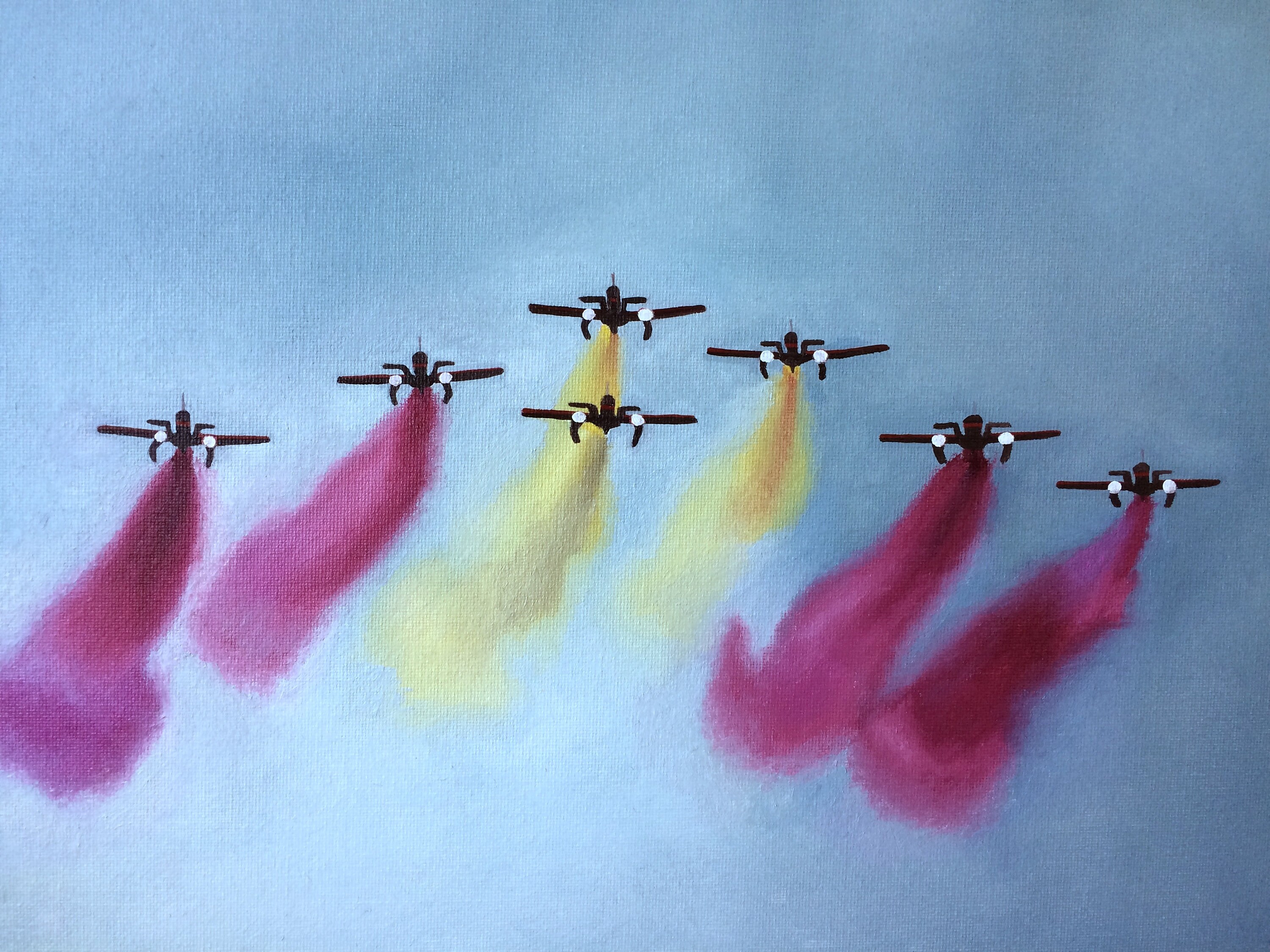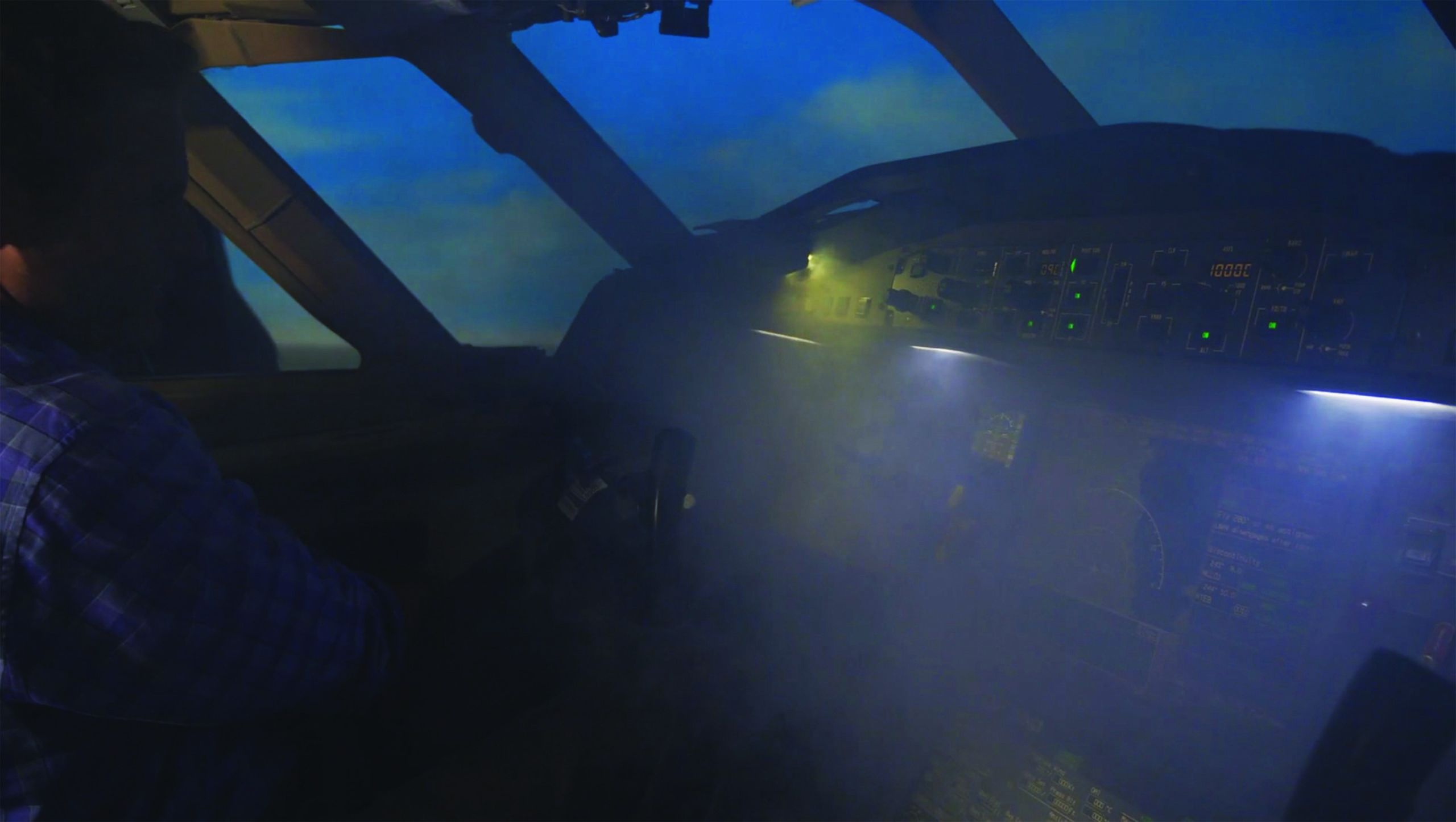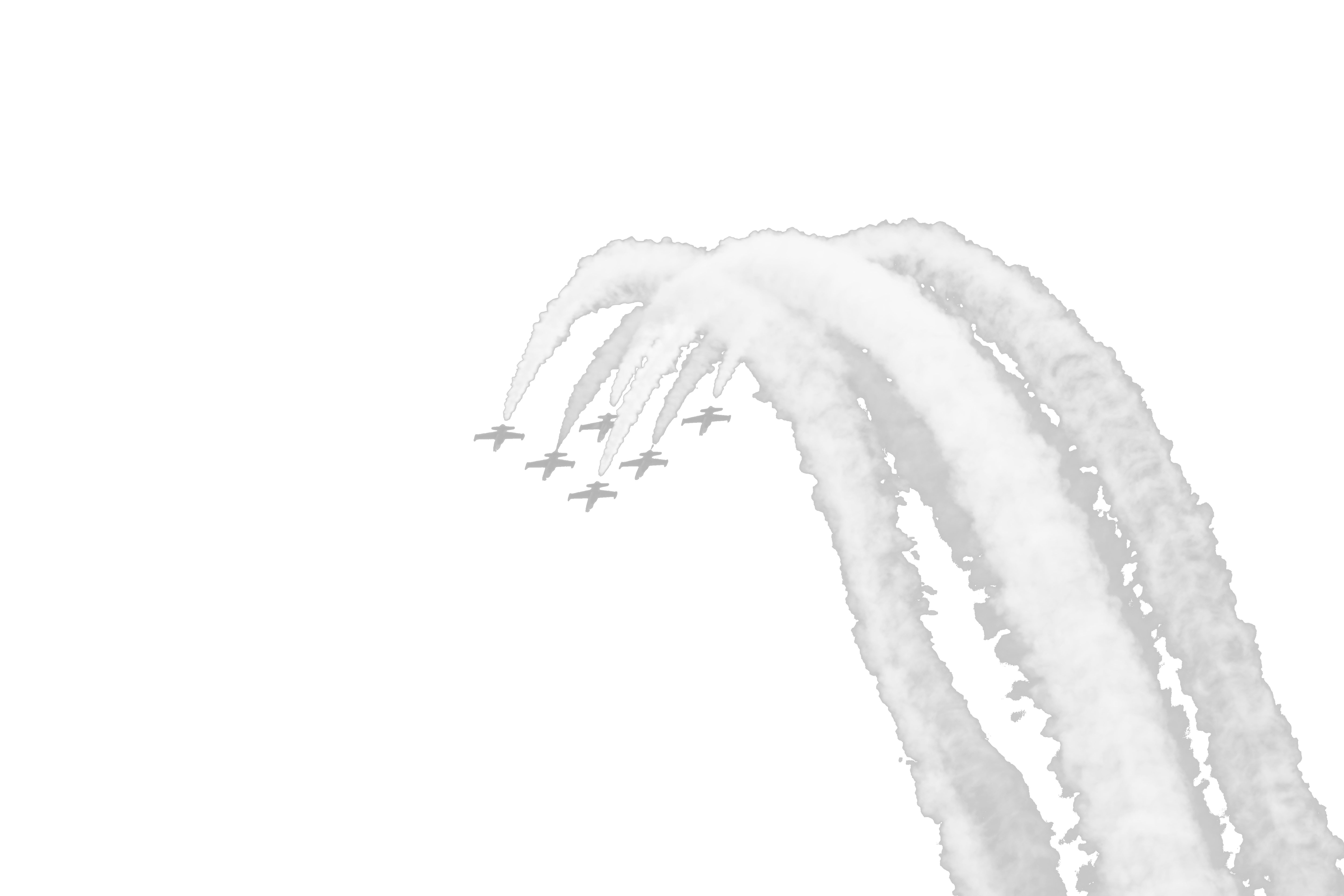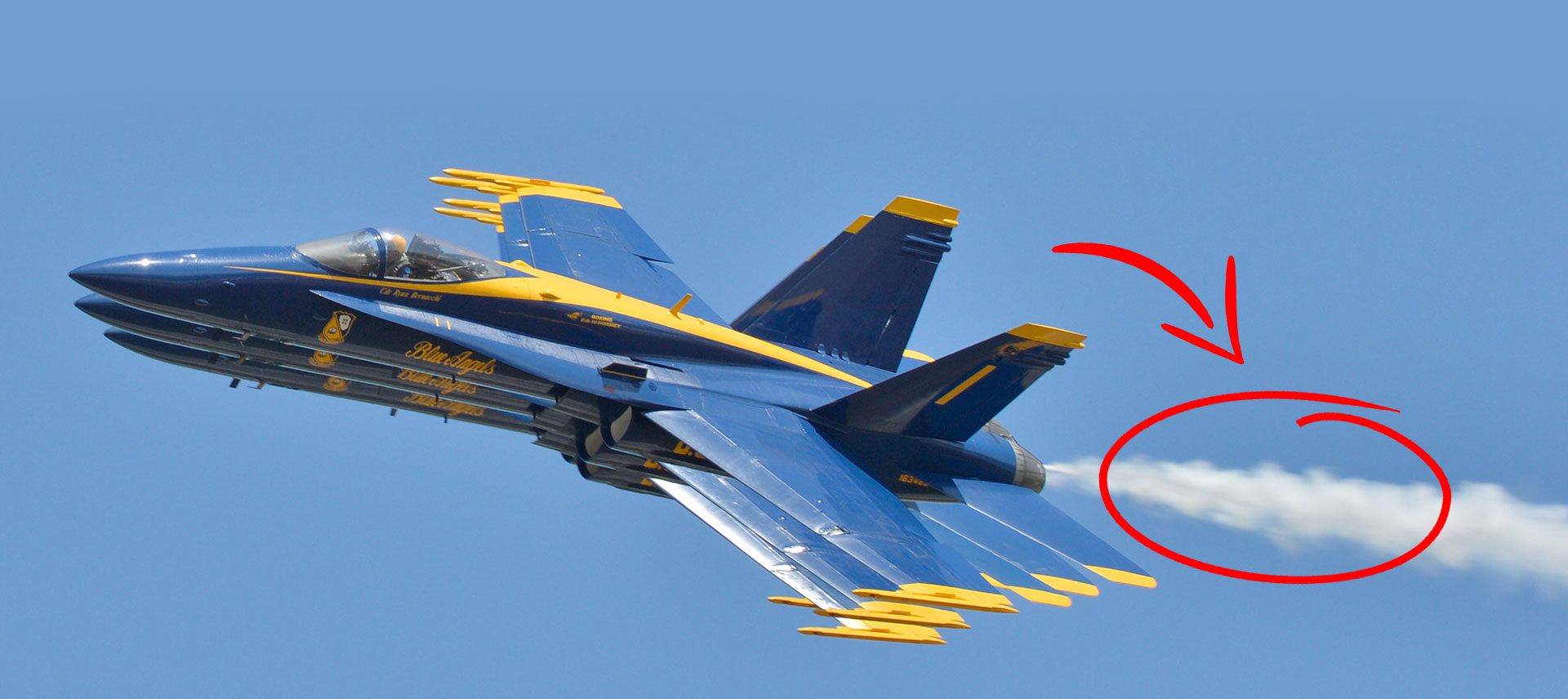Smoke Oil For Aircraft - Although a modern airshow without this addition is unthinkable, it’s a fairly recent addition to the line up. Smoke oil was first used in an air show in 1957 in Farnborough in the United Kingdom by the Black Cats, a Royal Navy helicopter demonstration team. For a time, diesel oil was used in aviation smoke systems. However, it was eventually discovered to have a negative effect on the bright paint schemes of aerobatic airplanes.
Blazing Aviation has provided engine oils for the Collings Foundation Wings of Freedom tour for many years with a strong logistics network that allows us to ship to their tour stops all across America. We help keep these classic warbirds well oiled as they offer tours and rides across the US.
Smoke Oil For Aircraft

The other two important requirements for smoke oil are the amount of smoke that it produces and the amount of deposits it leaves on the belly of your airplane. A general rule of thumb is the lighter the weight or viscosity the better. Usually an additive-free oil with a viscosity of about 10 centistokes at 40?C should work well. A thinner oil would probably be better. The problem is that additive-free oils with a viscosity less than 10 are not readily available.
Basics Of Aerobatic Smoke Oil
Aerobatic smoke oil helps spectators on the ground follow the action above their heads and adds a great deal of flair to an airshow. While it seems like an exotic part of aviation life, aerobatic smoke oil can be purchased off the shelf and even used in remote controlled airplanes. But what’s aerobatic smoke oil? What is its role? Let’s explore this exclamation point on air shows, which plays several different roles in aviation.
Nova provides custom blends of high performance aerobatic smoke dyes for aviation sport teams and elite air force demonstration squadrons. Novasolve smoke oils are ready to use or can be blended with Novasolve White Smoke Oil for lighter shades.
These systems require careful consideration by pilots and aeronautical engineers. They add weight to an airplane which is designed for maneuverability and quick turns; not only does the system increase an airplane’s weight, so does heavy liquid smoke oil. Even military aircraft, such as the F-18 Super Hornets used by the Blue Angels, require special retrofitting to allow for an appropriate system. The tanks of these systems must be able to withstand the high G forces of certain maneuvers, as well as safe containment as the aircraft performs fast, jolting turns which creates a great deal of sloshing.

Visibility for safety: Because it provides a controllable smoke trail, it is used so that spectators can follow the path of an airplane as it executes its maneuvers. The trail it leaves enhances what the pilot has just achieved. Most importantly, however, aerobatic smoke oil allows other pilots to see where other aircraft are relative to their own position. This is particularly important during group maneuvers. All members can follow one another’s trajectories.
Collings Foundation
Skywriting: There’s no skywriting without aerobatic smoke oil. Skywriting requires specially trained aerobatic pilots, as the control of the it is especially important. However, since skywriting is highly expensive for a client and TV and social media are seen by more viewers, skywriting is now rarely seen.
This oil is a mineral oil which is paraffin based. Depending on the color the pilot wishes to use, a safe chemical additive is included. Professional aerobatic pilots can purchase it by the multi-gallon drum, although those who operate radio controlled airplanes and amateur aerobatic pilots who use it only occasionally can find it in lower quantities. Some even make their own. When a team uses aerobatic smoke oil in formation, consistency is key. The pilots use the same kind, although some might have different colors for a particular formation effect.
In turbine applications the smoke oil is injected thorugh a nozzle several inches aft of the turbine exhaust. The exhaust heat and shear forces work together ot create a fine colored mist in the exhaust. Since turbine aircraft operate at higher airspeeds compared to piston aircraft a high flow, regulated pump assembly is crucial for delivering a consistent smoke output during the entire flight envelope.
We carry more brands of smoke oil than anyone else in the industry. US Navy Blue Angels and US Air Force Thunderbirds Approved. We have the right oil for your airshow. Canopus 13, Aeroshell Smoke Oil, Phillips Smoke Oil and CSP (Copper State Petroleum) Smoke Oil are in stock.

What Is Aerobatic Smoke Oil And Why Is It Used?
Many piston aircraft today are already fitted with smoke oil systems for creating white smoke from either a branded aviation smoke oil or diesel. In these systems smoke oil is delivered through coarse nozzles in the exhaust pipe very close to the engine manifold. While this arrangement works well for white smoke oil, it does not work with colored oil as it burns up at these high temperatures. For colored smoke the oil must be injected near the exhaust pipe tip through high pressure nozzles. That creates a fine mist that rapidly vaporizes for smoke while preventing the exposure of oil to high temperatures.
When selecting smoke oil, the number one concern should be safety ? for the audience and the pilot. For the audience, it is important to use oil that is a pure base stock with no additives. Never use an ATF or other additive-containing oil as the additives may be harmful to your health and the health of the spectators.
Modern aerobatic oil is biodegradable and non-toxic. Ideally, the oil has a low viscosity, which flows quickly and in a smooth line. This decreases wear on the smoke oil system and ensures that the intended color remains pure, without black tinges.
Depending on the number of engines the airplane has, as well as on the air swirls over the wing tip, contrails can last a matter of minutes, or sometimes longer, before evaporating. Contrails which hang for a while spread out and eventually become wispy cirrus clouds. Like aerobatic oil trails, the life contrails depends on many weather factors—temperature, wind, humidity, and other potential disturbances.
Colored Smoke Oils
So where are you going to find a non-additive oil with a high flash and low viscosity, blended with type I paraffinic base stocks? Your local lubricant supplier probably doesn’t have a clue. I would suggest you call the oil companies’ lubricant information centers for the name of a product that will meet these specifications. Good luck.

The other safety concern is the flash point of the product. If the flash point is too low, you can have a real problem, especially if you have any leaks, your system is not installed properly, or your engine is not operating correctly. In the past, the primary recommendation was for oil with a minimum of 300?-350?F flash point. Now a lot of people are using oils with a flash of only 250?F. I cannot find any data to base a recommendation on, so will just say the higher the better. Do not dilute with diesel or Jet A. If you dilute your smoke oil with over 10% fuel to get the oil to flow, you can reduce the flash to an unsafe point.
It looks cool: It also comes in many different colors. If you’ve ever seen the Air Force Thunderbirds, Navy Blue Angels, the Royal Air Force’s Red Arrows, you know how much it adds to a show. Sometimes show parachutists and sky divers such as the Army’s Golden Knights use a form of aerobatic smoke oil as well. These can add unmistakable flair for special events and group maneuvers.
We specialize in Smoke Oils and Aviation Oils for airshows. By stocking the smoke oils you need as well as the aviation piston oils you need, Blazing Aviation can provide everything you need under one contract. We are here for you even if you left it until the last minute.
Oil And Aircraft Systems
No airshow or aerial flying demonstration would be complete without bright trails of colored smoke trialing behind aircraft during flybys. Smoke is generated by spraying a highly atomized mist of paraffinic oil and dyes into the hot exhaust of a jet or piston engine aircraft. Effective generation of colored smoke is technically challenging and requires specially designed pumps, nozzles and smoke oil for optimal performance.
Since it is partially oxidized, ground crews and pilots know it must be handled as a potentially hazardous material. The smoke is formulated to vaporize completely. The mineral oils which are used as its base typically do not contain additives other than the safe compounds which are used to create a particular color. Airplane manufacturers encourage pilots and teams to use only certified oil so as to preserve the integrity of the system.

Choosing an additive-free oil sounds simple, but it is not. Most oil companies sell industrial oils that are additive free. But there are products out there that are called non-treated or other such nomenclature that are blended with line flush from the lube plant. They may be sold for uses such as form release oils or chain oils and are labeled as not having additives, but may contain some additives from the line flush. Always ask for a product that is additive free or zero ash.
Due to these products being hazardous, an additional shipping charge of $25.00 is automatically added to smaller "Ground Shipments". If you can order any combination of products that makes your total cart weight over 150 lbs. (which is considered "Freight Shipment"), this additional fee is waived. This can equate to considerable savings on shipping.
Smoke System For Turbine Aircraft
Smoke oil is another one of those lubricant recommendations that is more art than science. Most pilots have their own special blend. And oil companies are just a little nervous about the possible health and legal concerns when oil is partially oxidized and then blown into the air above a crowded airfield.
Besides providing smoke oil to many of the US Air Force Thunderbirds airshows during the regular season, Blazing Aviation also supplies them with smoke oil at their home base at Nellis AFB in Las Vegas for their winter practice.
In jets, the smoke oil system works with a fuel pump which transport the liquid from its tank to nozzles secured to the exhaust port. As the liquid oil comes into contact with the heated exhaust from the airplane, the oil burns, emitting its highly visible smoke. Oil dispersal is controlled by the pilot in the cockpit with a switch connected to the fuel pump. An electric pump is a major part of the array. For oil systems in turbine aircraft, the nozzle is located close to the turbine’s exhaust to produce a flammable mist. Just as with the jet system, the resultant burning oil makes for a bright artificial contrail.

We work with customers across the world to supply the smoke oil and aviation supplies they need. Send us a list of the aviation products you need and we will work up a quote for you.
Smoke Oils
Visibility for maneuver purposes: Sometimes the smoke trail is the point of the maneuver. It leaves patterns and a striking mark against the sky in specific designs. A spiral of smoke in the trail of a tight series of spins is particularly impressive.
Novasolve smoke oils are composed of liquid dyes blended in a white smoke oil base. The oil is stored in a small tank and injected through a pump into nozzles positioned at 90-45 degree angle into the exhaust stream of the aircraft. Production of colored smoke requires a combination of heat and airflow for proper generation of the colored gas aerosol. A high pressure pump and flow regulator assembly ensures colored oil is delivered at a consistent pressure to the injection nozzles so that smoke output is consistent during aerobatic maneuvers. This arrangement also ensures flow is uninterrupted during extreme G-forces and independent on engine throttle settings. Nova provides smoke systems and oils developed specifically for piston, turboprop, and jet aircraft. Continue reading to learn more about each specific application and to request a test kit.
It’s easy to tell the difference between a natural contrail and artificial aerobatic smoke oil. Contrails are thin clouds which form in the wake of the hot engines of jets, although it is possible for contrails to form behind some piston engines. The term “contrail” is an abbreviation for “condensation trail”. They form from the water vapor a jet engine leaves behind, and sometimes from the pressure differential created by an airplane’s wings slicing through the atmosphere. Meteorologically, they are classified as high level clouds.
Our Offered Services
aircraft smoke oil for sale, rc smoke oil, rc airplane smoke oil, airshow smoke oil, smoke oil for airplanes, what is smoke oil, pure white smoke oil, canopus 13 smoke oil